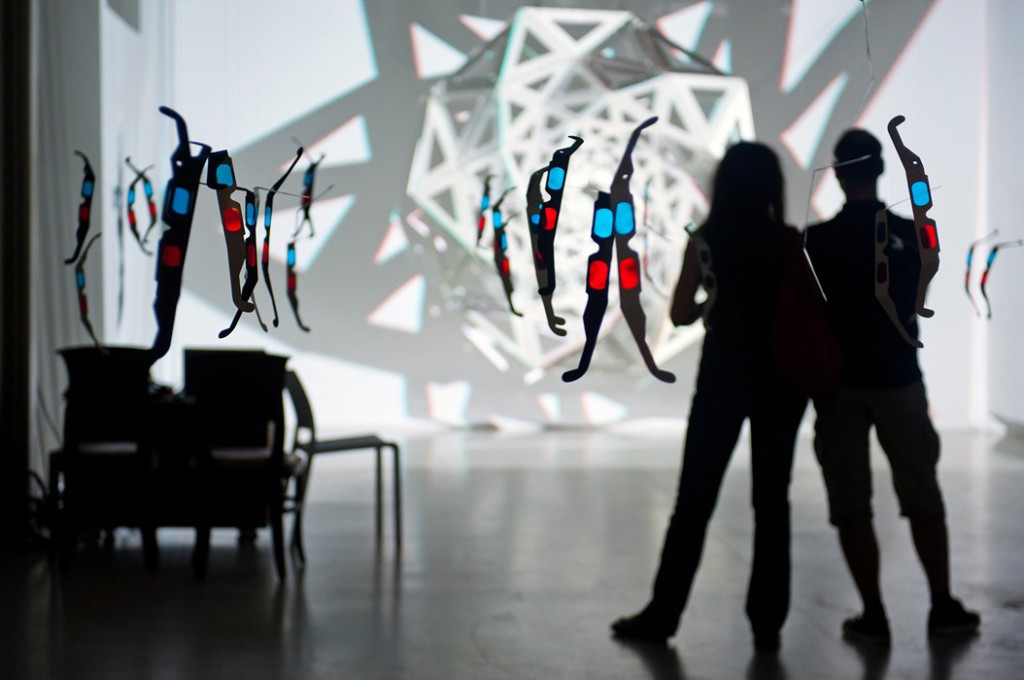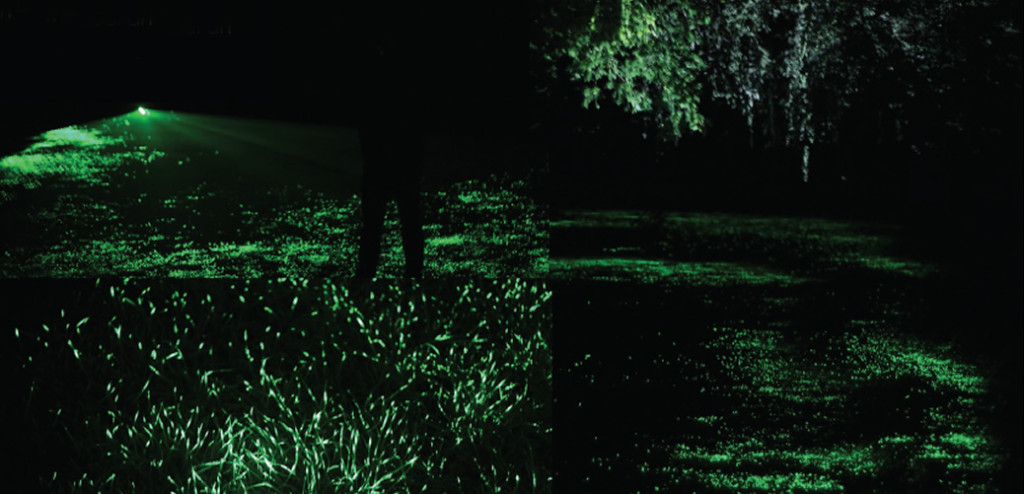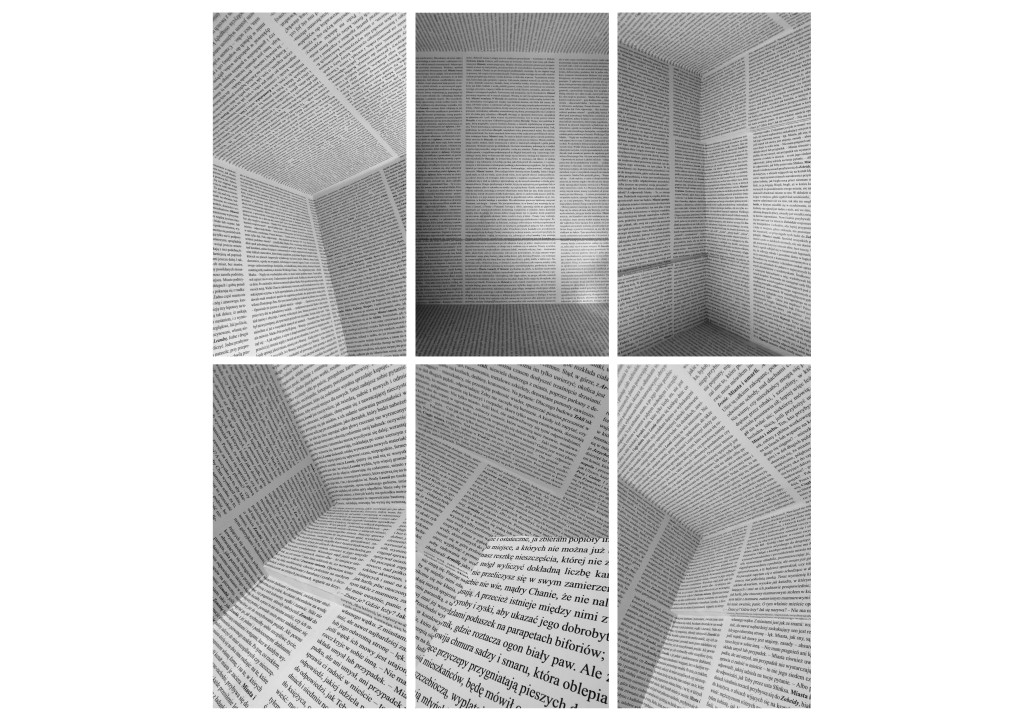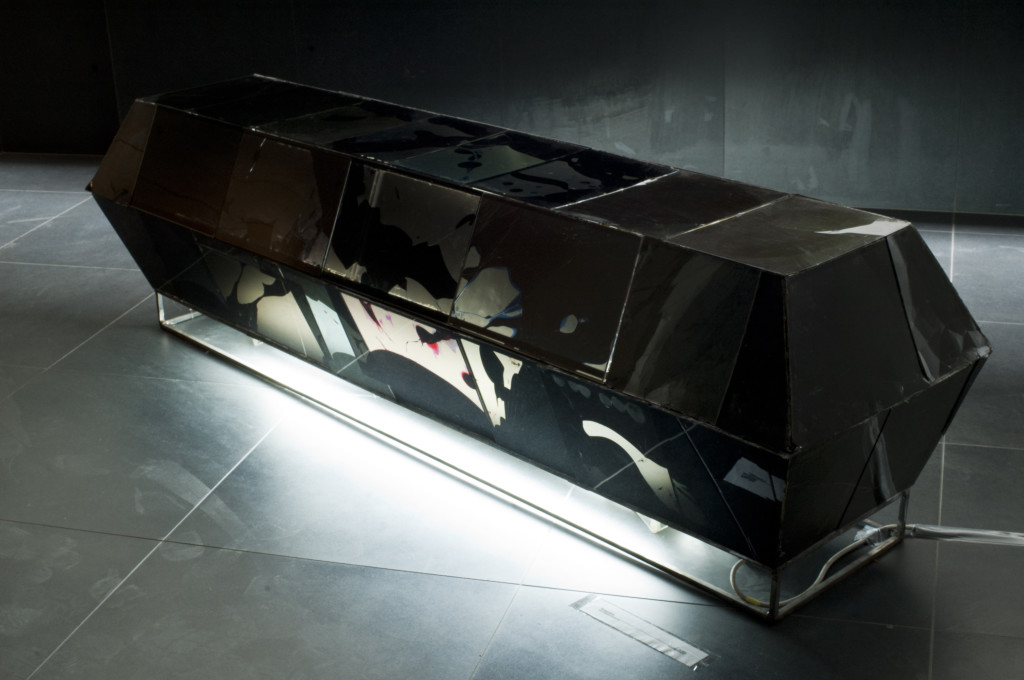exhibition
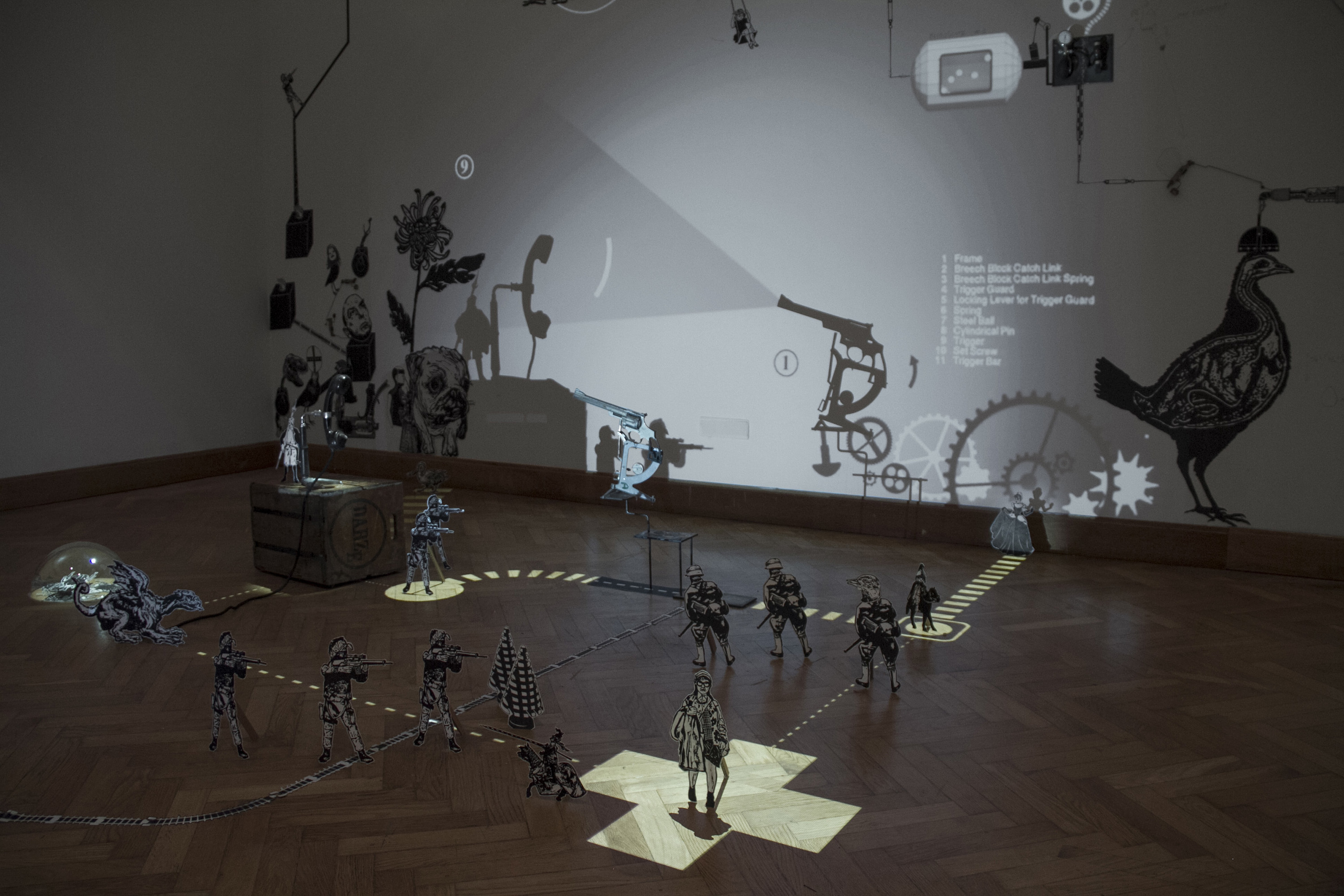 Mécaniques Discursives
Mécaniques Discursives
Fred Penelle & Yannick Jacquet / ANTIVJ [BE]
The project from AntiVJ member Yannick Jacquet and Fred Penelle, combines illustration and woodcutting with projection mapping in an audiovisual environment. Mécaniques Discursives is like a parenthesis between two epochs: Gutenberg’s and Big Data’s. By contrasting the oldest form of image reproduction (woodcutting) with the most recent digital technologies, the installation straddles centuries and contracts time.
While the passage of time seems to accelerate every day, Fred Penelle and Yannick Jacquet offer a pause, a suspension, a breath. A strange mechanism stretches across the wall, populated with shadowy chimeras. They are mysterious and yet somehow familiar. Is this a laboratory experiment or the plan for a future network? Minutely constructed like a fine clock, it traces connections, routes, genuinely-false, looping itineraries, inviting escape, inviting dreams. The narrative is deconstructed like a thousand-storied film script. Every effort is made to lead astray, to turn around, to forge ahead. Time is shredded, decomposed, lost…and yet everything references it.
So far the installation was exhibited among others at National Taiwan Museum of Fine Arts, Atsuko Barouh Gallery in Tokyo and Milan Design Week in Italy. Winner of Milano Design Week Tech Award and Art Collector’s Prize Slick Art Fair 2013 in Brussels, Belgium.
Spidron
László Zsolt Bordos [HU]
An art installation – sculpture which uses a complex geometric shape, stereoscopic 3D animation, sound and video projection mapping to create an unique audio-visual experience. The sculpture is a mathematical formula invented by the Hungarian designer and scientist Dániel Erdély, a student of Ernő Rubik himself.
The installation explores the visual possibilities of the geometric formation using the object mapping technique and approaches the mathematical formula from an artistic point of view. The stereo 3D animation viewable with glasses increases the illusion of depth and perspective, giving a totally new interpretation of the space and unique audio-visual experience.
ECHOOOOOOOO
PanGenerator [PL]
Interactive audio-kinetic installation.
An eight-channel robotic choir. Performers voice is processed in eight independent channels and fed to the speakers, movement of each speaker is directly connected with frequency and amplitude of the generated sound. Voice is modified individually by each of the speakers bringing unique sound sequence. Installation was presented during WRO Media Art Biennale in 2015.
Luminance
Daan Kars [NL]
Site-specific installation inspired by the bioluminance phenomenon of algea. Lasers and projected light moving through the landscape creates an fairytale like interaction with light. With light particles floating through the air are reflecting in the trees one can emerge themselves in a poetic landscape of light.
Installation operates only after dusk.
Maps of the Promised Land
Aleksander Janicki [PL]
Site-specific type of installation – it’s a room – a book, literature shown in 3d or specific type of reading room. Text of the book Invisible Cities by Italo Calvino has been closed inside the cube room. It covers the walls, floor and ceiling. Its typesetting was selected in such a way that the whole text will fit in to the room.
Entrance of the viewer into the unlit room automatically activates the light source. Horizontal line of light uncovers the pieces of text by slowly moving up and down. The scanner-like slide-way with a moving light is a vertical part of mobile ladder which can be moved freely by the viewer. Thus the viewer may select the appropriate fragment of text which he or she wants to read. The ladder allows also to read fragments that are illegible from floor level.
Italo Calvino is one the most prominent novelist of XX century. Invisible Cities is a work from the borderline of poetry and prose. It’s a novel without plot based on dialogue between the famous traveler Marco Polo and the lord of Mongolian and Chinese empire Kublai Khan (grandson of Genghis Khan) both living in XIII century.
In Calvinos work the content is as important as the structure, which the author likened to a polyhedron. Just like watching a three-dimensional block can be started from any point, so Invisible Cities can be explored starting from any page or chapter. Installation by Janicki is an extension of this principle. Introducing the text in three-dimensional space and achieving the effect of fragmentation by a narrow light illuminating only a few lines of text gives us the felling of immersion in matter of words in which poetry and philosophical threads through three-dimensional form of exposure stimulates reflection or… meditation.
Title of the instalation is a fragment of Calvinos work: “The Great Khan’s atlas contains also the maps of the promised lands visited in thought but not yet discovered or founded: New Atlantis, Utopia, the City of the Sun, Oceana, Tamoe, New Harmony, New Lanark, lcaria.”
Maps of the Promised Land by Janicki is another installation after the Tokaido – way of eastern sea exhibition and Black Out installation relating to the concept of maps. This time without the time-space conditions but with a reference to the realm of imagination stimulated by multi-layered structure of the work. It depends on the viewer and his intuition which route he will take.
The Grid
Rodrigo Guzmán Cázares aka ABDX [MEX]
Interactive installation that explores the relation of light, sound and space. Aiming to interconnect different worlds in one experience where like in nature the visitor is able to transform and distort its pattern while is there and afterward everything is restored to the original state. The grid is just the thin border where the digital reality blends with the physical world.
Requiem
Dariusz Nowak [PL]
In the midst of ‘digital era, as the screen addiction has become a common issue, one wonders at the impact that the technology has on the interhuman relations. The exhibited work is a product of context mentioned above, additionally, it is a form of a confession of the authors own “screen addiction”.

